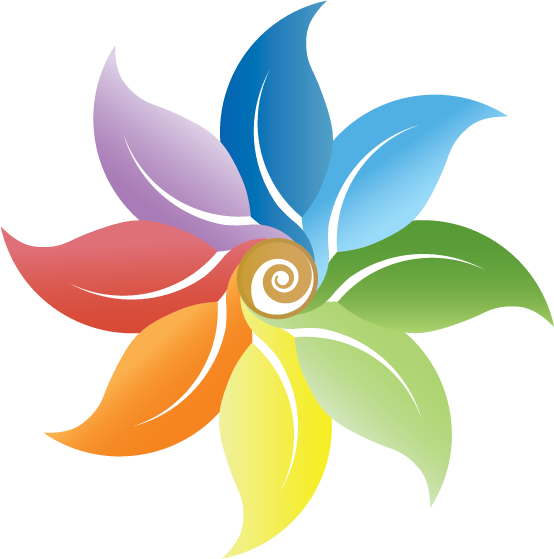Spring Awakening
04/11/2025

Spring Awakening and Supporting Wellness
You know that feeling after a rough illness where all you can do is sleep and rest and trust that your body is doing the healing work? And then one day you awaken and feel alive once again? Suddenly, magically, you feel better, more alert, more energized? You may need to take it slow for a bit and allow your strength to return. That is the feeling of Spring to me. This time of year, when the birds are singing loudly and enthusiastically seeking their mates and building nests, when bulbs are sprouting and peeking out of the ground, leaves are budding on trees, and early spring flowers arrive to feed the first insects to emerge. The beings of the Earth are awakening from a long hard sleep, groggy at first, they peek out, warm up, and come back to life!
I have a chronic illness that plays this scene over and over for me throughout the year. I may awaken with energy, thinking this day is my oyster, but within an hour or two feel ready to tuck in for a long winter’s nap. Some days I make it all the way from that Spring awakening to some Summer accomplishments before I feel the need to lay back down and hibernate for a bit. Occasionally, if I rest properly, and the stars are aligned, I might even get a second wind later in the day. I have learned to pace my energy (mostly) and not overdo it unless I know I have some time for recovery.
I have (mostly) embraced this pace of “Slow Time,” and learned to find peace and enjoyment in the little things like sitting quietly in nature watching the seasons unfold. I prefer to think I am supporting my wellness and not my illness. I have had phases in my life of busyness - the intensity of veterinary school, working in veterinary practices with non-stop emergency work, raising children, traveling and lecturing,…I have done a lot and I am quite satisfied with all of it. I have learned and stretched my understanding and perspectives, seen and assisted people grappling with care of their animals and their families through difficult times of all shapes and sizes. I am grateful to my many mentors in all forms- animal, plant, child, and elder…and virus. Yep, I am grateful for what my illnesses have taught me as much as I am grateful for my wellness. Life is a continuing cycle of awakening and rest, ideas, accomplishment, and reflection. My path may be moving more slowly now, but I revel in the growth and lessons to come.
Welcome Spring!
My courses are inspired by this feeling of taking the slow road, breathing the air, awakening the senses, and exploring the healing gifts of the natural world. I have been on this nature connection path for most of my life and enjoy this opportunity to share it with you.
Renewal with Fire
03/12/2025
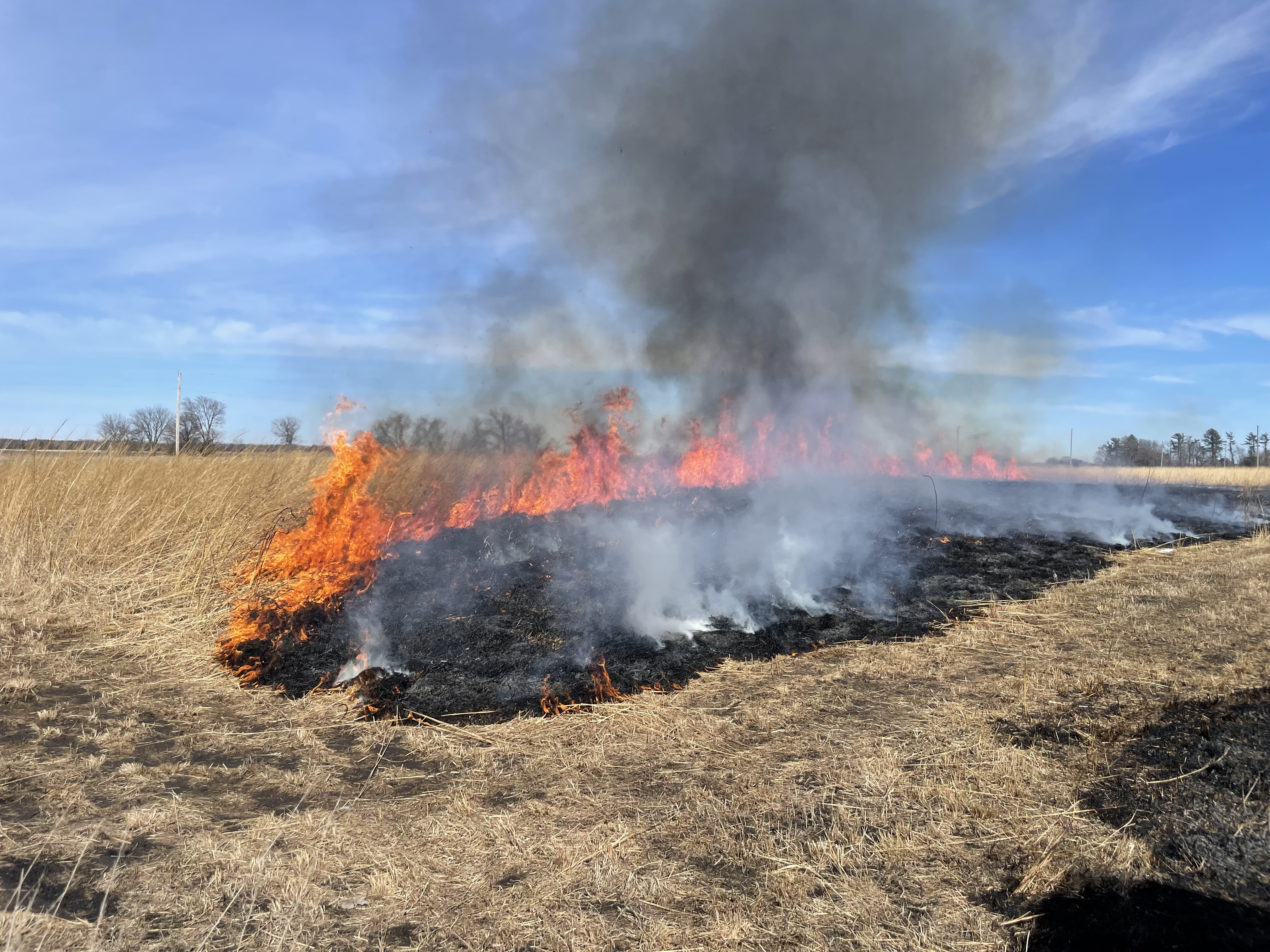
Last weekend I had the opportunity to participate in my first prairie burn! This amazing process is a Spring ritual here in Iowa.
Prairie burns help to clear away invasive species and promote native plant growth. Those grasses with their extensive roots like some disruption to stimulate growth. The burn clears dead plant material away to allow sunshine to reach the earth and releases nutrients. The whole process promotes diversity in the plants leading to a healthy ecosystem of insects and animals that depend on them.
The fire itself is such a dramatic experience of cleansing to make way for renewal. Fire can be destructive, so there are plenty of controls in place. In this case, boundaries of snow piles and muddy lanes between the fields blocked the possibility of spread (also alerting the fire department ahead of time just in case!) We had rakes and paddles as well as water tanks at the ready to guide the fire. Creating a perimeter and burning toward the center is an important technique that helps control the spread.
Watching this powerful fire spread, clearing the way for new growth was an inspiring way to welcome spring and think of my own needs going forward. What needs to be cleansed from my thought process, attitudes, and habits? How can I come out the other side refreshed and renewed, ready for new growth and experiences?
What Spring cleaning - literally or philosophically - will help you this year?
Nature Gratitude with the Elements
02/28/2025
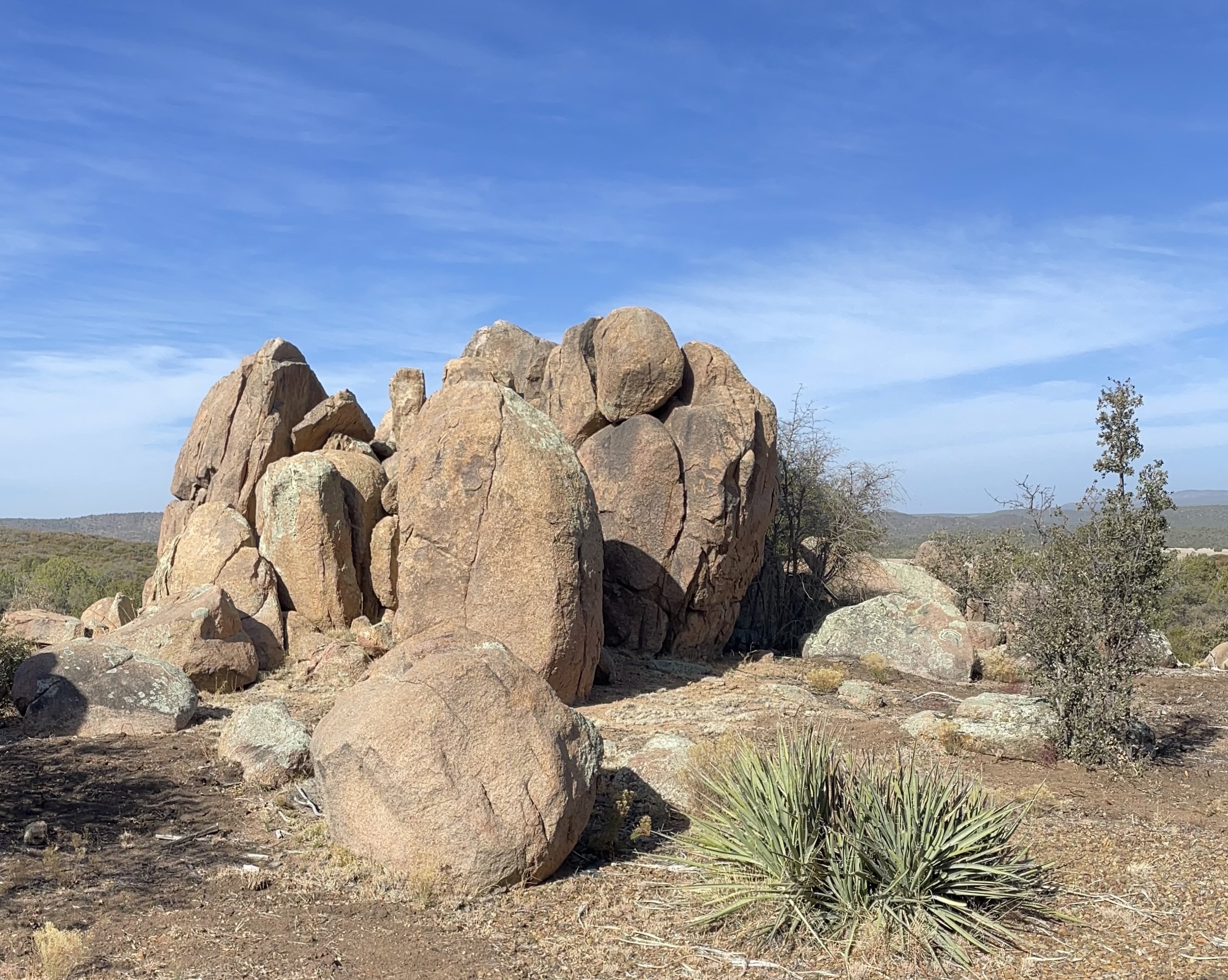
I have been spending some quiet time in nature in the high desert of Arizona this week. This unique landscape is a perfect reminder of the gratitude that I feel for the natural world.
The Earth element is stunning with granite boulders scattered over the mountainous terrain. It is a reminder of the vast time it has taken for the Water element to erode them into fascinating shapes and patterns. Looking closely at the lichens on the rocks, I can see how the intermittent presence of water pooling in cracks and dips on the boulders creates rings of growth and stasis as the lichen lives and rests with the cycles of rainfall.
I see evidence of the Air element in the abundance of lichens on the rocks and trees. Without roots, they absorb most of their nutrients from the air. The presence of lichens is an ecological indicator of good air quality.
Lichens (a symbiosis of algae and fungi) require sunlight for photosynthesis, bringing in the Fire element. The algae create carbohydrates that feed the fungi. Some lichens can survive in strong sunlight as these desert ones do, while others prefer shade. The colors we see in different lichen species indicate cellular protection from sun exposure.
I am grateful for the presence of this fascinating cooperative relationship and the reminder of the interconnectiveness of all things.
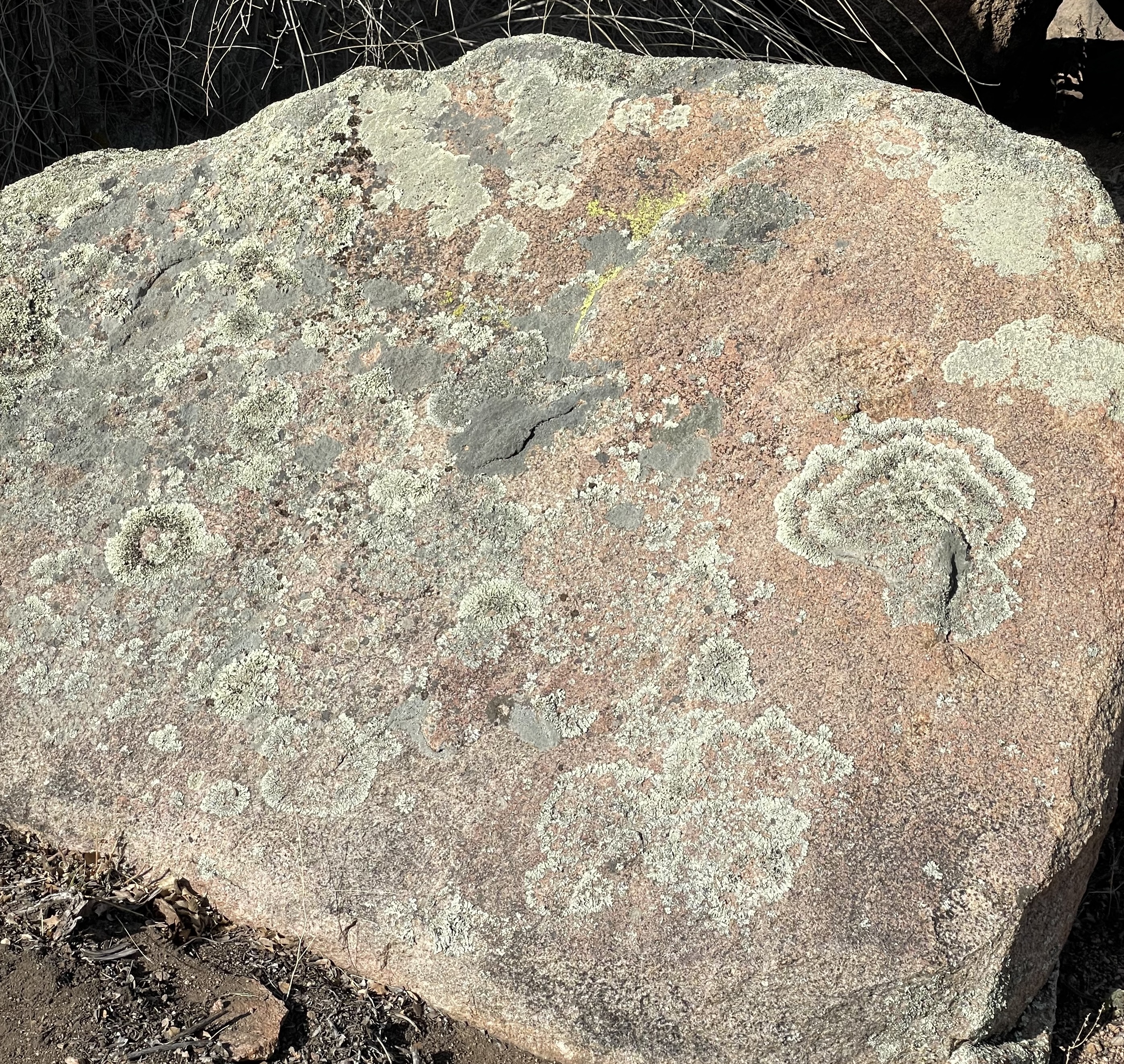
Winter's Pause
01/03/2025

After the hullabaloo of the holidays, as we move into the new year, I find January brings the opportunity to slow down, to pause. The whole world seems to be taking a deep breath in, holding it, and waiting for Spring to burst forth with new growth and activity.
Deep breathing and well-deserved relaxation during this reflective time give us a chance to dream and look forward to something new.
Allow yourself to be held in this quiet space and enjoy some restful deep breathing in Winter's Pause.
Open through January, join me for some quiet contemplation in the 4-week class:
Planning with the Seasons guides students through a process of personal Reflection, Review, and Renewal by exploring and building connections with the cycles of nature. Living with these rhythms of the seasons benefits self-care, personal growth, and relationships as we learn about our own nature.
Learn more about upcoming courses to support self-care and nature connection.
Embracing the Dark
12/15/2024
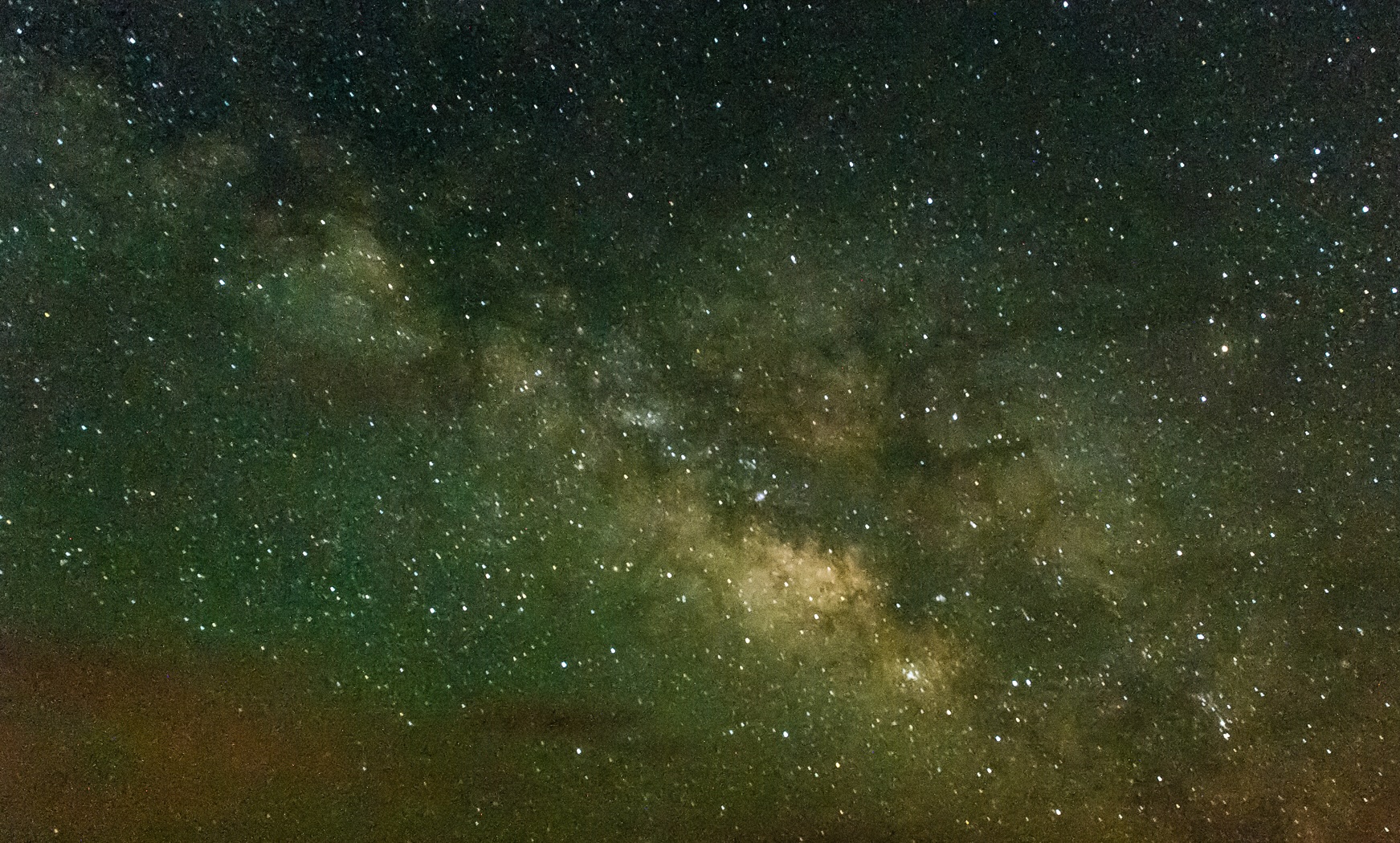
In the Northern Hemisphere, the deepest darkness of Midwinter is fast approaching. Winter Solstice, December 21 at 4:21am (Eastern Time US), is the point where we turn back to the light of the sun!
Darkness holds its own kind of beauty and wonder. It is the only time we can see the distant stars and mysterious shadow patterns from the light of the moon.
These long nights are a good reminder to slow down, to catch up, to breathe, and to reflect.
Enjoy some time outside at night with the flashlight turned off. Let your eyes adapt to the darkness and find your way using other senses. How do the creatures of the night navigate?
Here is my favorite poem for this time of year:
To go in the dark with a light is to know the light.
To know the dark, go dark. Go without sight,
and find that the dark, too, blooms and sings
and is traveled by dark feet and dark wings.
- Wendell Berry
Supporting Community
11/06/2024
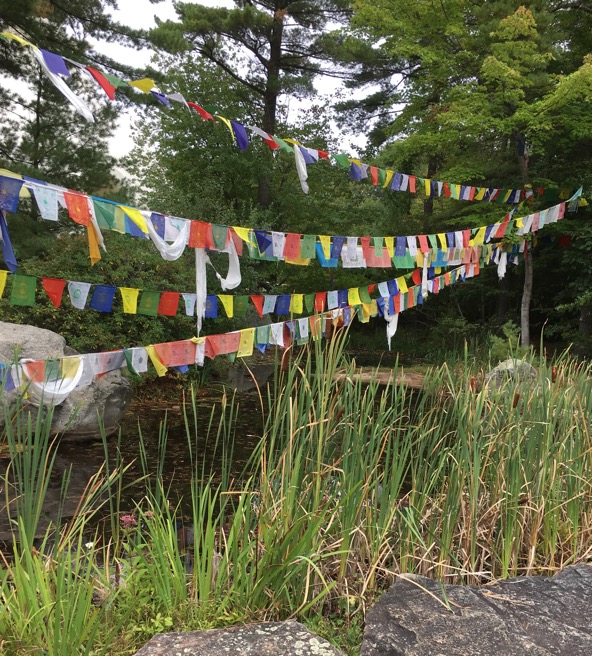
During this Autumn season of gathering, celebrating the harvest, and sharing stories of the day, we are reminded to take care of each other. Creating simple routines of daily self-care, from deep breathing to expressions of gratitude, enables us to spread care out into our communities.
Modern society tends towards isolation. Even with “social” media, we are isolated in our homes, our bubbles, in our phones, and our minds. Now more than ever, it is important to connect with our communities. Get outside, connect with nature, find a hiking club, a knitting club, a reading group, or a parenting coop, people with similar interests and ideals, values and goals.
Seek out something that brings people together for conversation and projects. What can a group accomplish that our singular households cannot?
Look to your community for support, look for those who need support.
Honoring the Dead
10/31/2024
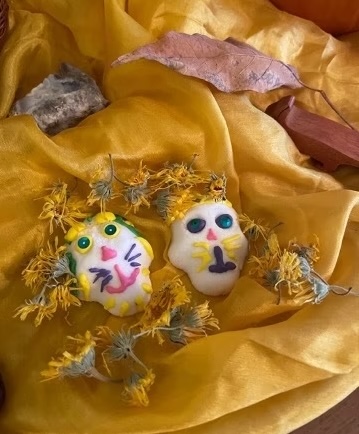
As we move through the cycles of the year and of nature, it is fascinating to ponder the many holidays with similar seasonal themes that have developed over thousands of years of human experience worldwide.
This season, with the plants dying back, leaves falling from the trees, and the daylight hours growing shorter, brings a time of reflection and remembrance.
Many cultures honor ancestors this time of year. Our Korean friends shared that the Mid-Autumn Festival celebrated around the Harvest Moon (usually September or early October), is when they traditionally take food and drink to the graveyards to honor loved ones who have passed on. When visiting an old family gravesite in Washington, my family takes time clearing weeds and tidying the area. There can be a soothing effect to this intentional honoring of those who came before us. I love these connections and similar expressions of remembrance all over the world.
Halloween, Samhain ("Sow-win"), and All Souls Day occur at the end of October and the beginning of November, a point halfway between the Autumnal Equinox and the Winter Solstice. It is seen as a key turning point, moving from the light of summer into the darker days of winter. During this time, when people often feel a closer connection to the dead, they can acknowledge the uncertainties and fears we hold around the spirit world and death, while also remembering and honoring those who have gone before.
The Mexican celebration honoring the dead, Día de Los Muertos (Day of the Dead), begins November 1 and goes overnight into November 2. This celebration existed in ancient Aztec times with skull imagery and customs of bringing food and drink to graveyards in honor of the dead. Combined with All Souls Day by the Spanish Catholic conquistadors, it has evolved over time to include the elaborate parades, costumes, and sugar skulls we think of today.
For Día de Los Muertos, families create an altar or ofrenda in their homes with photos and objects that remind them of loved ones who have passed. Often, they place sugar skulls on the altar with the names of family members. These skulls can be decorated as humans or animals, with bright yellow and orange marigolds featuring prominently.
One year, my children and I made sugar skulls and placed them on our nature table. We honored our two cats that had died over the previous year. This was my girls' first experience with the death of loved ones and a good opportunity to add remembrance to our celebration. It is a lovely tradition that brings out the deeper meanings lost in our modern celebrations of Halloween.
What traditions do you have for remembrance and honoring the cycles of life and death?
Autumn - Season of Change
09/18/2024
Autumn Equinox is September 22, 2024!
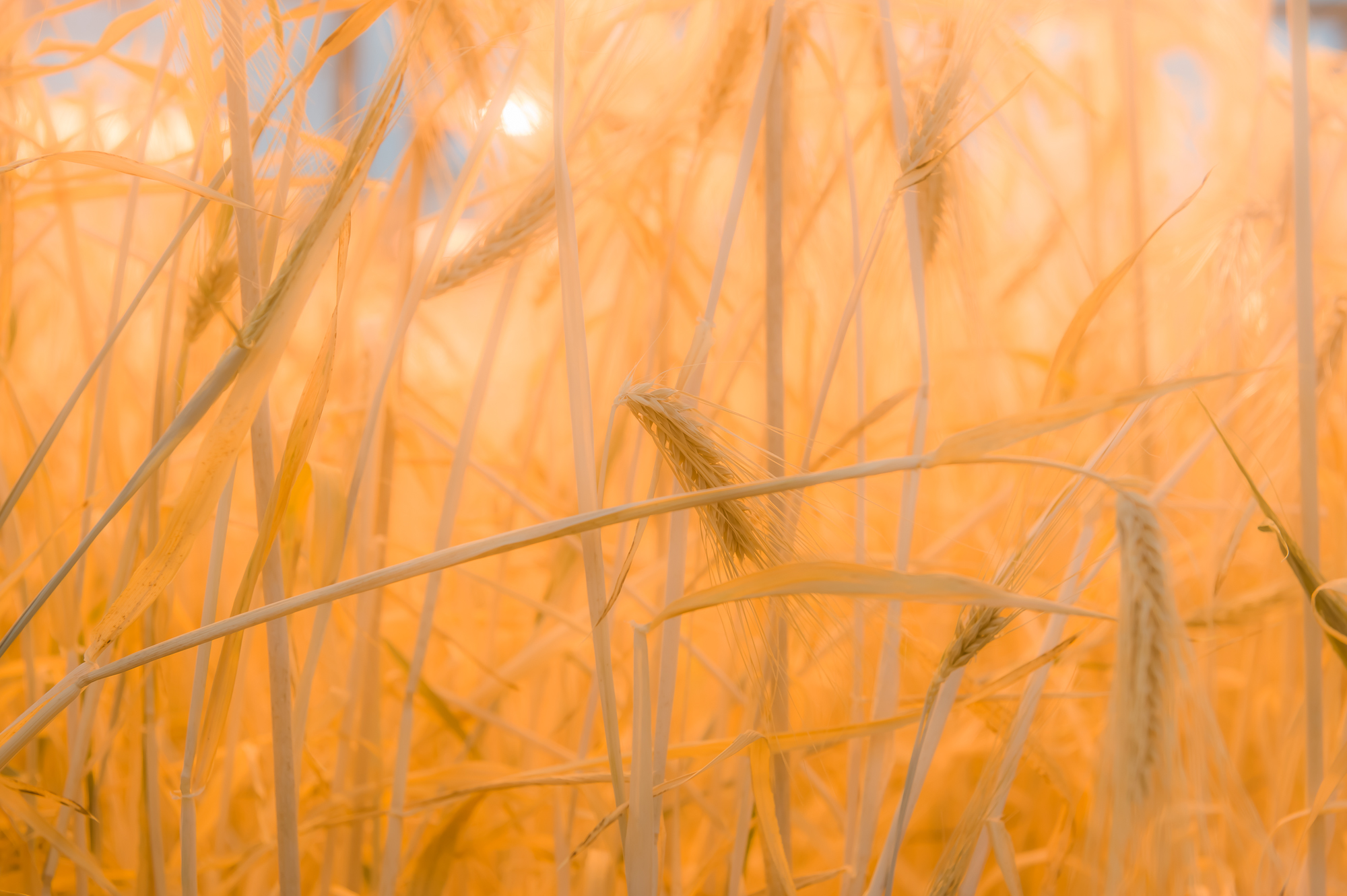
This marks a point in the year - opposite to Spring - where days and nights are equal in length. With the leaves turning colors and falling to the ground, this time of year is a definite reminder that in life, as in nature, things are ever-changing.
Over the next weeks, for many of us, the final harvests will be made in our gardens. Those fall squashes and gourds are ready to become soups, pies, and festive decorations. A few flowering plants linger into the frost, but many are already dying back, adding to the compost of the earth to feed next year's growth.
Cool breezes replace the summer heat. This is a time of slowing down and taking time for ourselves. Congratulate yourself for dedicating some time to self-care this season and beyond!
What do you notice in this Season of Change?

This marks a point in the year - opposite to Spring - where days and nights are equal in length. With the leaves turning colors and falling to the ground, this time of year is a definite reminder that in life, as in nature, things are ever-changing.
Over the next weeks, for many of us, the final harvests will be made in our gardens. Those fall squashes and gourds are ready to become soups, pies, and festive decorations. A few flowering plants linger into the frost, but many are already dying back, adding to the compost of the earth to feed next year's growth.
Cool breezes replace the summer heat. This is a time of slowing down and taking time for ourselves. Congratulate yourself for dedicating some time to self-care this season and beyond!
What do you notice in this Season of Change?
Natural Cycles Design Certification
07/25/2024
This year, I had the opportunity to participate in a certification for teaching, learning, and living with the cycles of nature in a Designing with Natural Cycles Masterclass by Jon Young with several guest speakers. They took us around the wheel and the 8-Directions (click here for the simple version,) giving examples of practical applications from nature camps for children and adults, teaching and educational flow, wedding planning, corporate organization, and establishing peace and supportive roles in communities of all kinds. I have used these techniques and principles in my teaching for several years in herbal medicine, self-care, and veterinary topics, and I am excited to incorporate new ideas.
Every year in my Self-Care Through the Cycles of Nature course, I find ways to deepen this process and bring relevance to caring for ourselves, connecting with nature, and sharing those ideas in our communities and the world. Combining this with research and principles of self-care known to alleviate burnout and compassion fatigue, my intention is to facilitate caregivers in creating their own pathways to healing and resilience.
We live surrounded by these cycles, often oblivious to their influences and potential for healing. Simple activities and explorations can help to ground us and expand our perspectives, opening the possibilities for wonder, gratitude, curiosity, and caring that extend beyond ourselves to our children, elders, friends, and families.
Registration for the 9-month Self-Care course is open!
Sign up by August 15th to receive your gift packet in time for the September 1 starting date.
Every year in my Self-Care Through the Cycles of Nature course, I find ways to deepen this process and bring relevance to caring for ourselves, connecting with nature, and sharing those ideas in our communities and the world. Combining this with research and principles of self-care known to alleviate burnout and compassion fatigue, my intention is to facilitate caregivers in creating their own pathways to healing and resilience.
We live surrounded by these cycles, often oblivious to their influences and potential for healing. Simple activities and explorations can help to ground us and expand our perspectives, opening the possibilities for wonder, gratitude, curiosity, and caring that extend beyond ourselves to our children, elders, friends, and families.
Registration for the 9-month Self-Care course is open!
Sign up by August 15th to receive your gift packet in time for the September 1 starting date.
Free Mini Nature Journal Class
06/30/2024
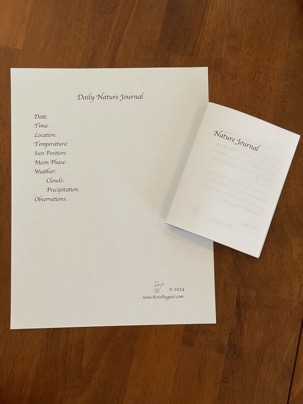
Days 1-10 of the Mini Nature Journaling class are now available!
Starting on Summer Solstice, June 20, I have been uploading one journal prompt daily. There is a PDF sample journal for taking notes, and you can even create a mini journal if you are feeling crafty!
This has been a fun project for me. I am excited to share it and to spread some mindful connection to nature. Over 10 days we explore a variety of aspects of nature, each one opening up avenues for deeper dives into learning and appreciating the wonders of the outside world.
I happened to be visiting my 86-yr-old mother in Arizona during this time. She was an attentive student, sharing her observations every day, writing in her journal, and teaching me lessons she learned from her tracker father.
I see this project as something that can be shared with children or elders, family, and friends, to encourage people to get outdoors and experience our interconnections with nature.
This free class is available year-round.
Sign up any time!
